Telescopes
Our telescopes | Reflectors
| Refractors
The Society's Telescopes
Our primary, original telescope is an 8" Newtonian (reflector), and is
a very high quality instrument, especially since its primary mirror was
re-silvered early in 1999. The telescope is near St. Aubyn's School on Blundell's
Road (see the map). Our chairman, Douglas,
is pictured with it below. For details of the telescope's history, click
here.
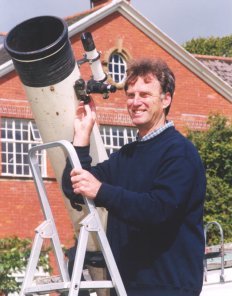
Douglas with the Newtonian at Milestones
In late 2001 and early 2002 we obtained five new instruments (listed below)
with our New Opportunities Fund grant from the Lottery Commission. Along
with the telescopes, SCS Astro
also generously provided us with £350-worth of extras.
| Meade LX-90 |
8.0" mirror |
Schmidt-Cassegrain |
GOTO system; 30,223-object database |
| Helios Skyliner 200 |
8.0" mirror |
Dobsonian |
- |
| Meade DS-2114 ATS |
4.5" mirror |
Newtonian |
GOTO system; 1,400-object database |
| TAL 100-R |
4.0" lens |
Refractor |
- |
| Orion UltraView 10x50 |
10x50mm,
10x mag |
Binoculars |
- |
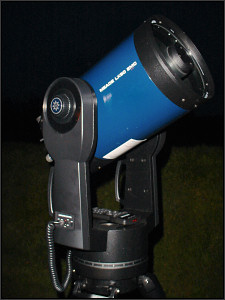
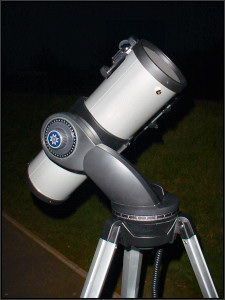
Two of our newer telescopes
TOP
Reflectors
At the simplest level, all reflecting telescopes involve the use of mirrors
to focus light rays (and lenses at the eyepiece), whereas refracting telescopes
rely purely upon lenses. The basic characteristics of different optical
configurations are charted below, starting with a common one used by most
amateur astronomers, the Newtonian. (Information from Illingworth, 1994.)
The refractors follow, and then some telescope
manufacturers and suppliers.
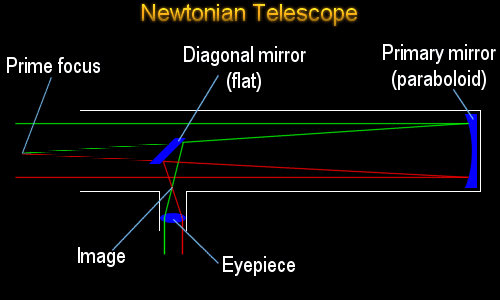 |
| Inventor |
Isaac Newton (English) in 1670 |
| Benefits |
Eyepiece mounted on the side of the
tube makes the small-primary Newtonian convenient to use for amateurs. |
| Drawbacks |
Eyepiece mounted on the side of the
tube makes the large-primary Newtonian inconvenient to use for
professionals! |
| Notes |
- Based upon work by Gregory and
Zucchi
- A 45° prism can be used in place of the diagonal mirror |
| |
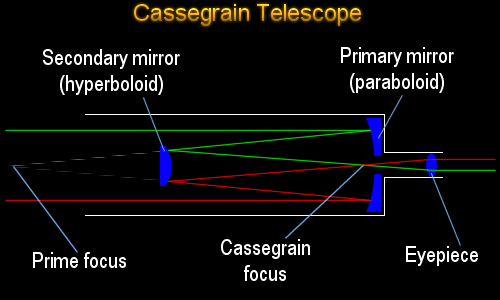 |
| Inventor |
Guillaume Cassegrain (French) in
1672 |
| Benefits |
Compact optics make the telescope
portable and easy to mount; it is convenient for amateurs, and quite
popular. |
| Drawbacks |
Small field of view, primarily due
to coma. |
| Notes |
|
| |
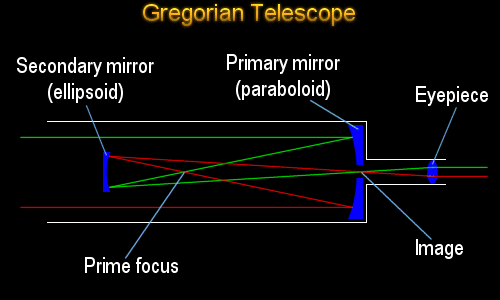 |
| Inventor |
James Gregory (a Scottish mathematician)
in 1663 |
| Benefits |
In the 'aplanatic' Gregorian, coma
effects and spherical aberration are eliminated because it uses an ellipsoid
primary. |
| Drawbacks |
In the 'aplanatic' Gregorian, a small
field of view (limited by astigmatism) is the result of using an ellipsoid
primary. |
| Notes |
First compound reflecting telescope. |
| |
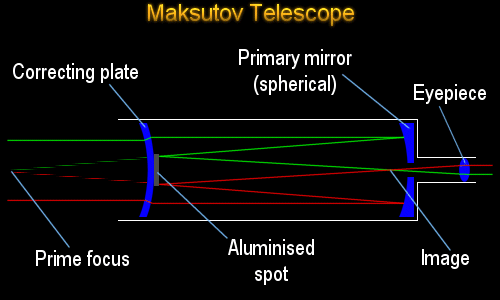 |
| Inventor |
Maksutov (Russian) in 1944 |
| Benefits |
|
| Drawbacks |
|
| Notes |
- Telescope is 'catadioptric': correcting
plate is a meniscus lens (deeply curved).
- The diagram above illustrates Maksutov-Cassegrain optics; Newtonian
and Gregorian configurations are also possible. |
| |
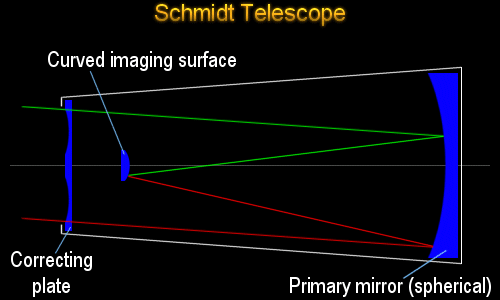 |
| Inventor |
Bernhard Schmidt (Estonian) in 1930 |
| Benefits |
- The telescope is 'catadioptric':
the correcting plate eliminates spherical aberration.
- The optics provide an extremely large field of view, as illustrated
above. |
| Drawbacks |
|
| Notes |
|
| |
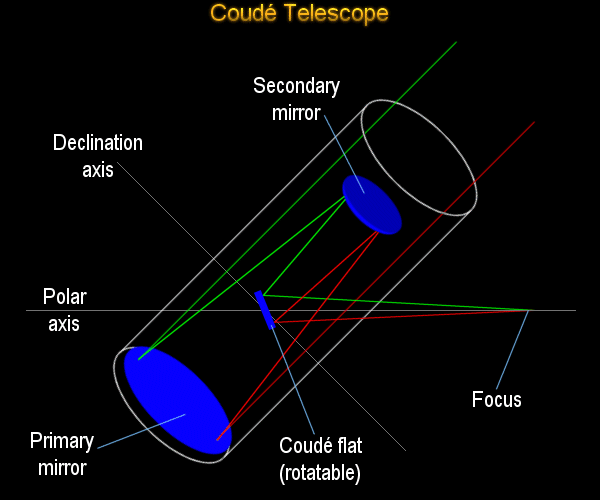 |
| Inventor |
|
| Benefits |
|
| Drawbacks |
Small field of view, primarily due
to coma |
| Notes |
Any telescope in which light emerges
along the polar axis; this means direction is fixed as the observed
object follows its path across the sky. Thus, the object can be analysed
by large pieces of stationary equipment, set up at the focus. |
TOP
Refractors
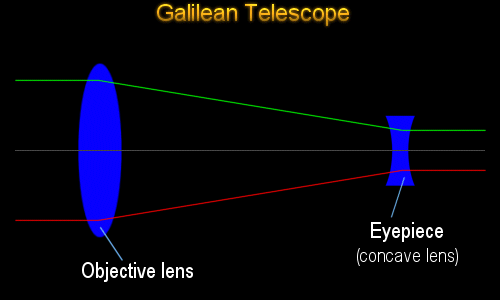 |
| Inventor |
Galileo Galilei (Italian) in 1609 |
| Benefits |
Upright image, due to long-focus
object lens and powerful diverging lens at eyepiece. |
| Drawbacks |
|
| Notes |
- Inspiration came after witnessing
Hans Lippershey's 'magic tubes'.
- Up to 30x magnification. |
| |
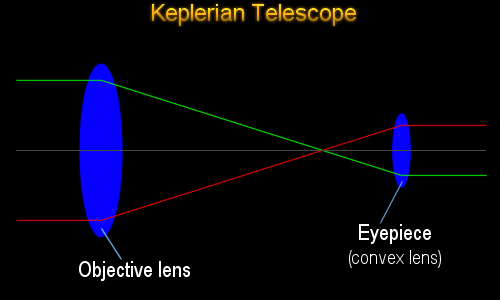 |
| Inventor |
Johannes Kepler in 1611 |
| Benefits |
Larger field of view and greater
magnification than Galilean optics can provide. |
| Drawbacks |
Small field of view, primarily due
to coma |
| Notes |
Inverted image, with more powerful
object lens and and another convex lens at the eyepiece. |
Meade
Celestron
SCS Astro
Orion Optics
David Hinds Ltd
BC & F Telescope House










